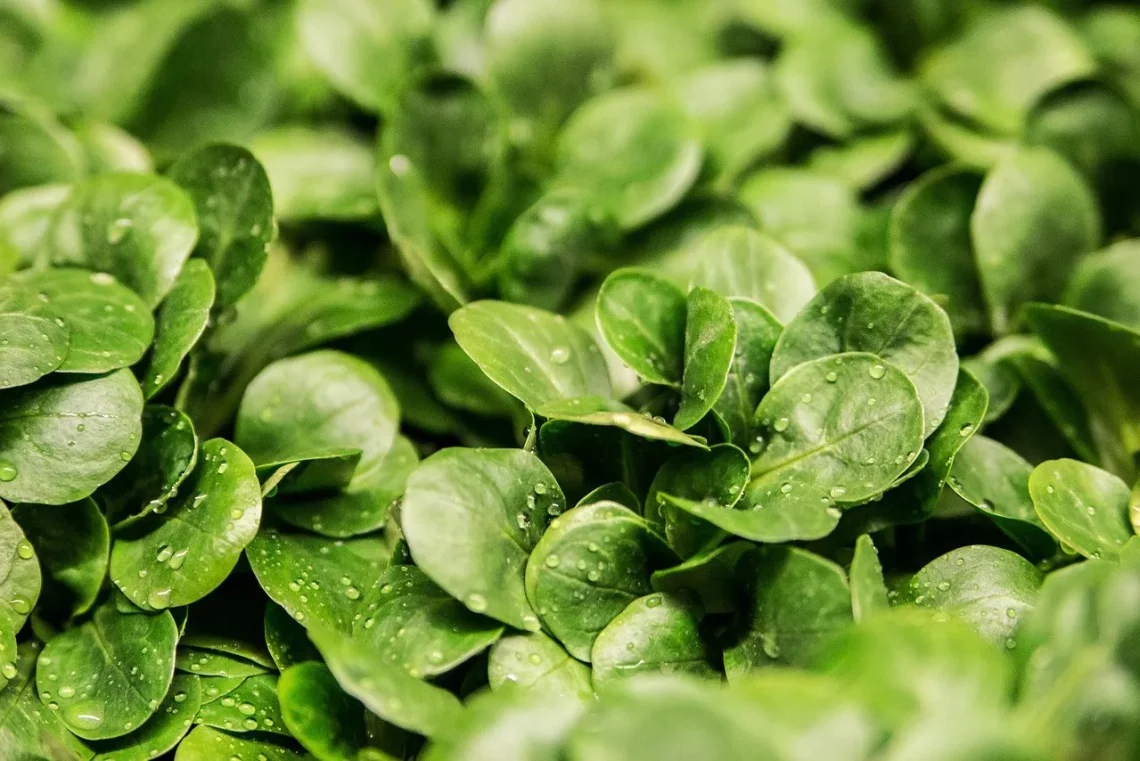
Can Guinea Pigs Eat Collard Greens? A Comprehensive Guide
Guinea pigs are beloved pets known for their gentle nature and friendly demeanor. As small herbivores, their diet is crucial to their overall health and well-being. While many guinea pig owners are aware of the basic dietary requirements, such as hay, pellets, and fresh vegetables, there can still be confusion regarding which specific greens are safe and beneficial for these furry companions. Among the various leafy greens available, collard greens often come up in discussions among guinea pig enthusiasts.
Understanding the nutritional needs of guinea pigs is essential for any pet owner who wants to provide the best care. These small animals require a diet rich in fiber, with a good balance of vitamins and minerals. Fresh vegetables can play an important role in their diet, but not all greens are created equal. Some may offer more nutritional benefits than others, while certain types can be harmful if fed in excess. This brings us to the question of collard greens—are they a suitable addition to your guinea pig’s diet?
In this article, we’ll delve into the specifics of collard greens, including their nutritional profile, potential benefits, and any precautions that should be taken when incorporating them into your guinea pig’s meals. By understanding more about what these greens can offer, you can ensure that your pet remains healthy and happy.
Nutritional Profile of Collard Greens
Collard greens are a member of the Brassica family, which includes other nutritious vegetables like kale, broccoli, and Brussels sprouts. These leafy greens are renowned for their high nutrient content, making them a popular choice for health-conscious individuals and pet owners alike.
One of the standout features of collard greens is their impressive vitamin content. They are particularly rich in vitamin K, which is essential for blood clotting and bone health. Additionally, collard greens provide significant amounts of vitamins A and C. Vitamin A supports healthy vision, immune function, and skin health, while vitamin C is crucial for maintaining a healthy immune system and promoting tissue repair.
Moreover, collard greens are a good source of dietary fiber, which is vital for a guinea pig’s digestive health. Fiber helps maintain proper gut function and prevents issues such as gastrointestinal stasis, a potentially serious condition in guinea pigs. The leafy greens also contain minerals such as calcium and iron, both of which contribute to overall health.
However, it’s important to note that while collard greens have numerous benefits, they also contain oxalates—compounds that can bind to calcium and potentially lead to kidney stones if consumed in excess. This means that while they can be part of a varied diet, they should not be the sole vegetable offered to your guinea pig.
In summary, collard greens offer a wealth of nutrients that can benefit guinea pigs when fed in moderation. Their fiber content supports digestive health, while their vitamins contribute to overall well-being. Nonetheless, it is crucial to balance their intake with other vegetables to ensure your pet receives a comprehensive diet.
Benefits of Feeding Collard Greens to Guinea Pigs
Incorporating collard greens into your guinea pig’s diet can provide several benefits, primarily due to their rich nutrient profile. One of the key advantages is their high vitamin C content. Unlike some animals, guinea pigs cannot synthesize vitamin C on their own, making it essential for them to obtain this vitamin from their diet. Regularly feeding your guinea pig collard greens can help ensure they meet their vitamin C requirements, supporting their immune system and overall health.
Another benefit is the fiber content found in collard greens. Fiber plays a critical role in maintaining healthy digestion. For guinea pigs, a high-fiber diet is necessary to prevent digestive issues and maintain a healthy gut flora. By offering collard greens, you are providing a source of this essential nutrient, which can help prevent problems such as bloating and constipation.
Collard greens are also an excellent way to introduce variety into your guinea pig’s diet. Like humans, guinea pigs can get bored with their food, and offering different vegetables can keep their meals interesting. This can stimulate their appetite and encourage them to eat a wider range of nutrients.
Furthermore, the natural crunchiness of collard greens can also contribute to dental health. Guinea pigs have continuously growing teeth, and chewing on fibrous greens helps wear down their teeth naturally. This can prevent dental overgrowth, which can lead to painful issues if left unaddressed.
Despite these benefits, it is essential to introduce collard greens gradually into your guinea pig’s diet. Start with small amounts to allow their digestive system to adjust. Monitor your pet for any signs of discomfort or digestive issues, and consult a veterinarian if you have concerns.
In conclusion, collard greens can be a beneficial addition to your guinea pig’s diet. They provide essential nutrients, promote digestive health, and add variety to meals. Just remember to feed them in moderation and alongside other vegetables for a balanced diet.
How to Introduce Collard Greens to Your Guinea Pig’s Diet
Introducing new foods to your guinea pig requires a thoughtful approach to ensure a smooth transition and to minimize the risk of digestive upset. When it comes to collard greens, the process should be gradual and monitored closely.
Start by selecting fresh, organic collard greens from a reliable source. Look for vibrant leaves that are free from wilting, yellowing, or signs of spoilage. Rinse the greens thoroughly under cool water to remove any dirt or pesticide residues.
Once you have prepared the collard greens, begin by offering a small piece—roughly the size of a quarter. This initial serving will allow your guinea pig to sample the new food without overwhelming their digestive system. Observe your pet’s reaction closely for any signs of digestive distress, such as diarrhea or lethargy.
If your guinea pig enjoys the collard greens and shows no adverse reactions, you can gradually increase the serving size over the next few days. However, it’s essential to maintain a balanced diet by continuing to provide other vegetables, hay, and high-quality pellets. Variety is key to preventing boredom and ensuring your pet receives a wide range of nutrients.
As you introduce collard greens, consider alternating them with other leafy greens to prevent excessive consumption. While collard greens are nutritious, they should not be the only vegetable in your guinea pig’s diet. Rotate with other options like bell peppers, romaine lettuce, or parsley to provide a diverse array of nutrients.
If you notice any changes in your guinea pig’s behavior or health after introducing collard greens, such as changes in appetite or unusual droppings, consult a veterinarian. It’s always better to err on the side of caution when it comes to your pet’s health.
In summary, introducing collard greens to your guinea pig’s diet can be done safely and effectively with careful monitoring and gradual increases in serving size. By following these guidelines, you can help ensure that your pet enjoys the benefits of this nutritious green while minimizing any potential risks.
Precautions When Feeding Collard Greens to Guinea Pigs
While collard greens can be a healthy addition to your guinea pig’s diet, there are some precautions to consider to ensure your pet remains safe and healthy. Understanding these risks can help you make informed decisions about your guinea pig’s nutrition.
One primary concern is the oxalate content in collard greens. Oxalates can interfere with calcium absorption and, if fed in excessive amounts, may contribute to the formation of kidney stones. To mitigate this risk, it’s essential to offer collard greens in moderation and alongside a variety of other vegetables. This variety helps to balance the overall calcium and oxalate intake.
Additionally, always wash collard greens thoroughly before feeding them to your guinea pig. This step is vital to remove any pesticides, chemicals, or bacteria that may be present on the leaves. Organic collard greens are a safer option, but washing them is still necessary to ensure their cleanliness.
Another precaution is to avoid feeding collard greens that are wilted, yellowed, or showing signs of spoilage. Freshness is crucial for the health of your guinea pig, as spoiled greens can cause digestive issues or illness. Always inspect the greens carefully before offering them.
Furthermore, be cautious with portion sizes. While guinea pigs can enjoy collard greens, their diet should primarily consist of hay, which provides the necessary fiber for digestive health. Vegetables should only make up a small portion of their overall diet. A good guideline is to offer a variety of vegetables, ensuring that no single type exceeds 10-15% of their daily food intake.
Lastly, it is essential to observe your guinea pig for any signs of discomfort after introducing collard greens. If your pet exhibits unusual behavior or digestive issues, it’s advisable to consult a veterinarian for guidance and potential dietary adjustments.
In conclusion, while collard greens can be a nutritious and enjoyable addition to your guinea pig’s diet, it’s crucial to take precautions to ensure their safety. By being mindful of oxalate content, ensuring freshness, and monitoring portion sizes, you can provide a balanced and healthy diet for your furry friend.
**Disclaimer:** This article is for informational purposes only and is not intended as medical advice. Always consult a veterinarian for any health concerns regarding your guinea pig or before making significant changes to their diet.




